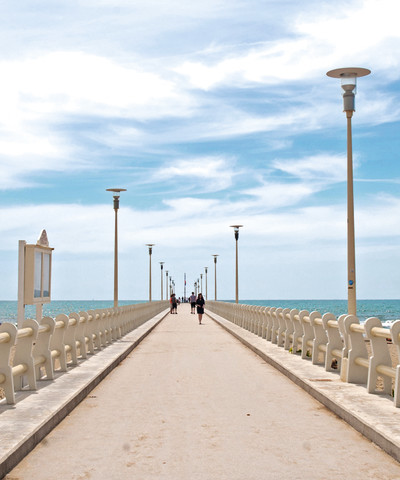Our meeting in Florence with Vittoria Colonna
Learn more about descendant of Michelangelo’s muse of the same name
The Colonna family is one of Europe’s most ancient and illustrious dynasties. Along with the Orsini family, with whom they were always in dispute, the Colonnas are the only surviving patrician family of Ancient Rome. It has given the Church popes, cardinals and generals, men of arms and culture. Its most prominent members include Sciarra Colonna, author of the Outrage of Anagni attack on Pope Boniface VIII, the enemy of Dante; Oddone Colonna, aka Pope Martin V, and Marcantonio Colonna, hero of the battle of Lepanto in 1571. But one of the most prominent females of the family, and also the literary world, was Vittoria Colonna, marchioness of Pescara and wife of the marquise of Ávalos, and daughter of a Montefeltro who was herself connected with the most important families in feudal Italy. Vittoria was a talented poet and a muse to Michelangelo, with whom she enjoyed a deep and reciprocal friendship. The two met many times at Palazzo Colonna in Rome, and were frequent correspondents. In his celebrated fresco of the Last Judgement in the Sistine Chapel, Michelangelo depicted Vittoria next to him, to the right of the Cyrenian.
Today, in a Florence studio in the heart of the historic Palazzo Bartolini Salimbeni, we find another Vittoria, her descendant, who inherited from her famous Renaissance ancestor not only her name and her beauty, but also her attitude to art, spirituality and freedom.
A screenwriter, artist, singer and director, Vittoria grew up in Ireland and Italy before studying fine art at the Accademia di Belle Arti in Rome, trained as an opera singer in Tuscany, then continued in show business at the Gaiety School of Acting in Dublin. She has directed documentaries, music videos and films which have competed in international festivals, winning a number of awards and even an Oscar qualification for her 2014 short film Sandboy. This year her art will be on display at the Serre Torrigiani from 5 to 16 May in her first solo show in Florence, entitled WILD.
What’s your connection with Florence, and what do you love about the city?
I love this city because it taught me the meaning of the Renaissance. I went back to my family’s roots, and there’s a magic here that changed my life. Florence is a small cosmopolitan city that attracts incredibly creative people, and it has a Tuscan identity steeped in quality and sincerity, from food to fashion and culture. I adore it.
Do you remember the first time you saw a work by Michelangelo in Florence?
I fell in love with the Doni Tondo at the Uffizi Gallery. It was his first painting on canvas and the only work of its kind in Florence and the world.
What can we visit in Tuscany that’s linked to the Colonna name?
Definitely Villa Torrigiani in Camigliano di Lucca, which is owned by my uncle Don Fabio Colonna, with its baroque architecture and its award-winning gardens.
WILD is your upcoming exhibition in Florence; what’s it about?
It’s actually a double show. WILD, at the Serre Torrigiani, explores the personal relationship between artist and plants. It will be followed by WEEDS, which is the result of a collective experience and will be installed as an art pop-up in several sites across the city, but we’ll be revealing the details in the coming months. The works for both exhibitions were created last year in Topanga, California, and are now coming to Florence for the occasion.
Who is Vittoria Colonna?
I love and live for art! A career isn’t everything; human interactions and relations mean far more to me. Every job has taken me around the world, from Japan to Argentina, Australia to the United States. The more I travel, the more I realise we’re all interlinked. There’s no separation. And that’s the secret to happiness. I love to take the freedom of colours everywhere! I’m so lucky to be a multi-tasking creative. Every piece is a love story. Sometimes the end result is a separation or a new beginning, and that’s why I find honesty and freedom in abstract painting. I’m always curious to know where the painting wants to take me. For me, mastering an art means thinking less and feeling more; it’s the definitive guide to self-discovery and inner peace. And every time is like a homecoming.










